New
Texas "Canyon" and Flume Research - November 2007
Okay, here's the dam that makes canyon lake:

And the spillway, which is behind you in the above photo:
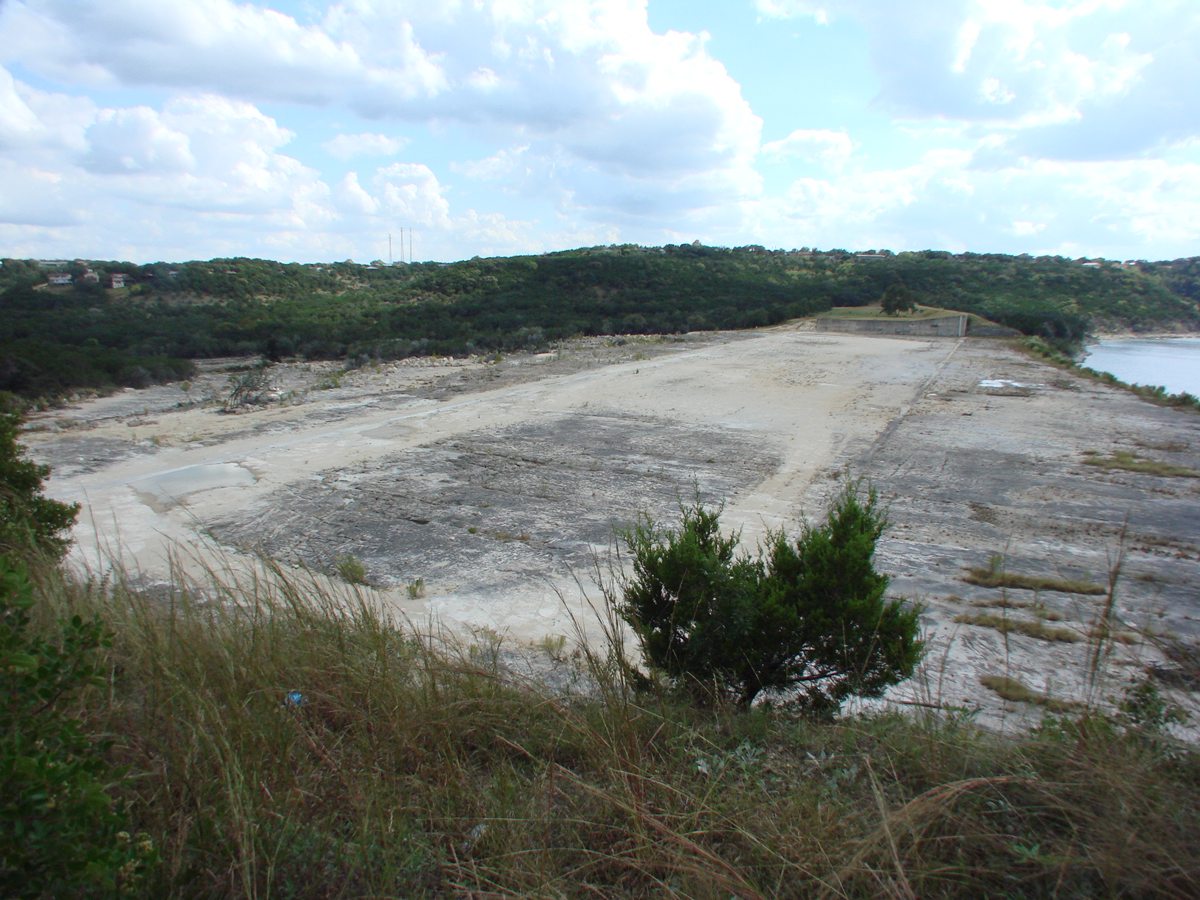
As you can see - it's a pretty significant spillway; a LOT of volume
could go through here with even a shallow overflow. If you look
at the far left of the picture, you can see the wall of the upper
scour, here's a close-up:
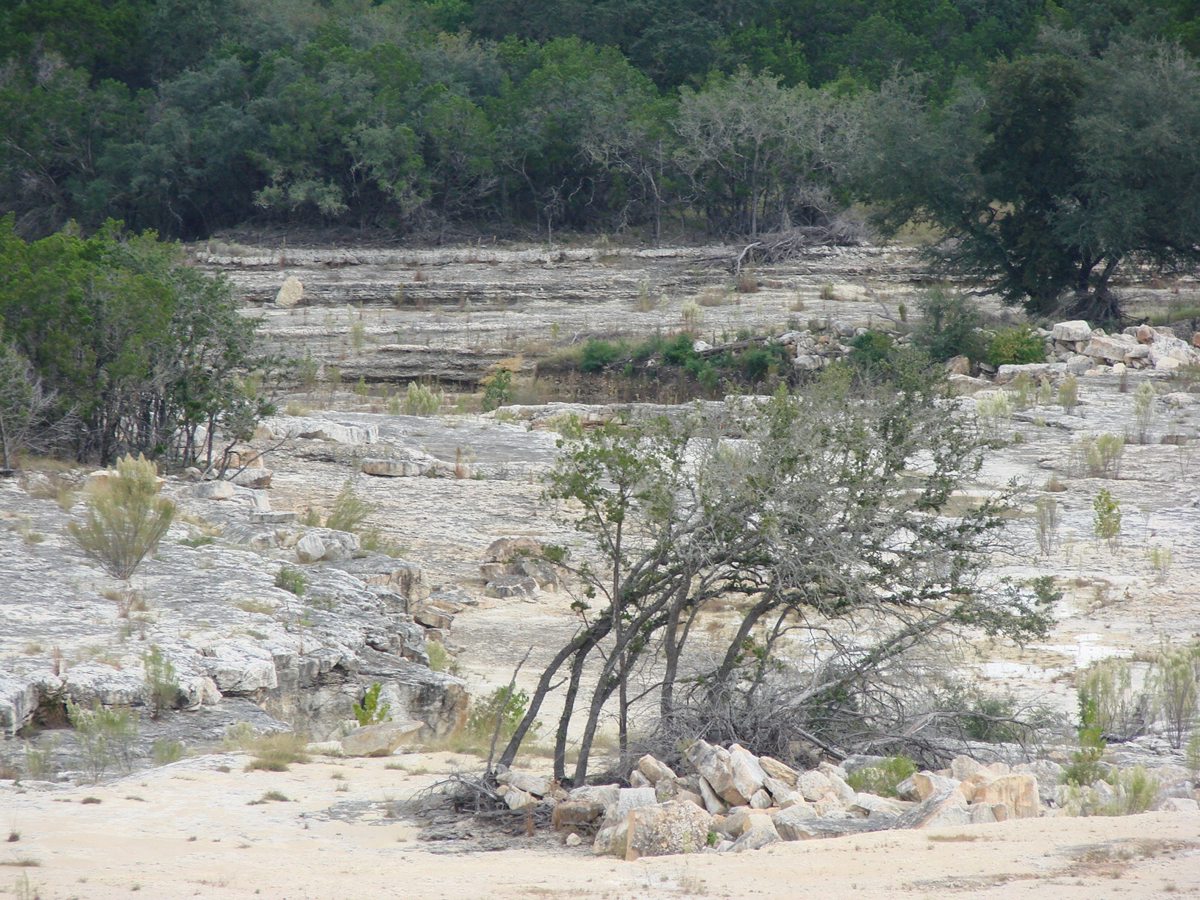
Following South Access Road, you drive right across the lower end of
the canyon; the walls here are about 20 to 30 feet or so, and while
indeed
some of the layers are a very soft limestone, others are incredibly
hard. This or course cuts through the Austin chalk, which at this
location is one of the thickest places of "chalk" in the world.
You can tell which layers are hard in the photo by the
erosion exhibited. The soft layers are undercuts underneath the
hard layers in both the walls and the waterfalls within the canyon.
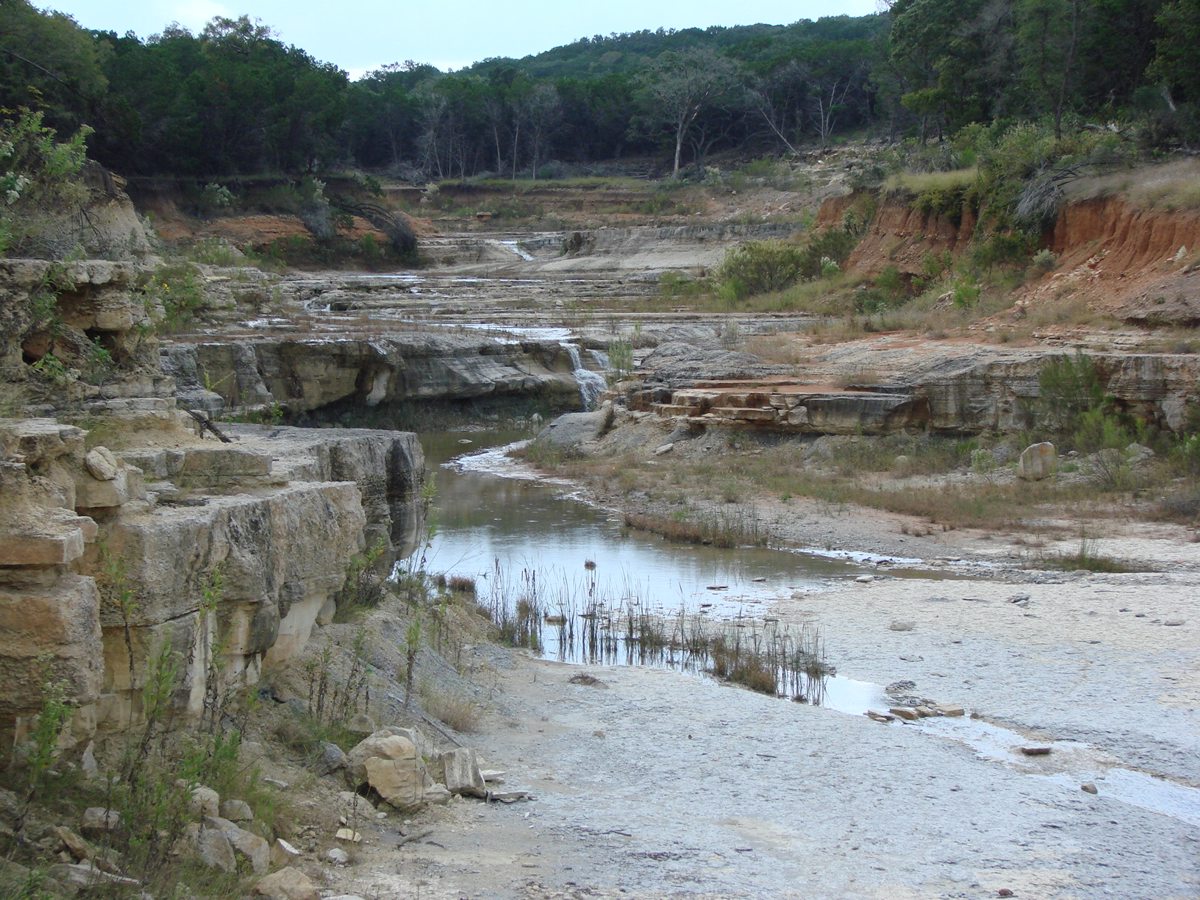
Very little talus or rockfall, and there seemed to be several areas of
downcutting much like a gorge (i.e., the Niagara gorge).
And the nice, welcoming fence:

And now for our flume research. See the report from the first
research to get a handle on what we're doing here: http://ianjuby.org/sedimentation
We spent the week fighting with equipment, trying to get the new,
bigger flume built; it's 8 times larger than our first one, and we
converted the rotary flume into the Binford 9000, the world's largest
mixmaster. We installed a door on the side; the first one blew
out and we tried to make another new "Texas Canyon" in Glen Rose - we
told Carl Baugh not to let the creationists see it or else they'd flock
to there and tout it as evidence of a past global flood.
So after replacing the door with a steel one, it worked pretty good
(CLICK ON THE IMAGE TO VIEW THE VIDEO ~ 1.3 MEG WMV)
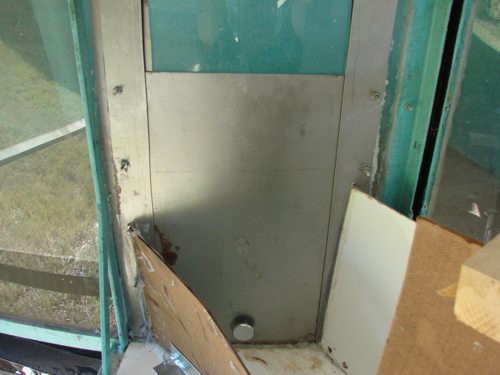
After a very frustrating week, we were finally able to get the system
running - we had so much volume of water that we needed to add a
gas-powered trash pump to recirculate the water uptop. So we
repeated previous research from March of this year, and tilted the new
16' long flume uphill about 1 degree. Of course, it produced
beautfiul crossbeds (CLICK ON THE PICTURE TO VIEW A HI-DEF TIME LAPSE
VIDEO ~ 6MEGS)
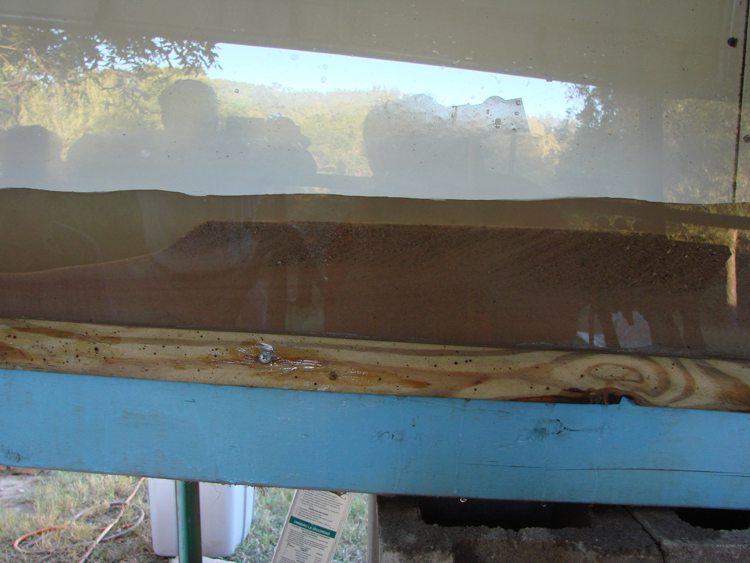
Normally we clean the flume in between each run; however, we were
having so many technical problems, that we didn't waste our time
cleaning out the sediments, and left them in from a previous test
run. This led to a serendipitous formation of wave ripples,
formed by crossbeds, and producing translatent climbing beds:

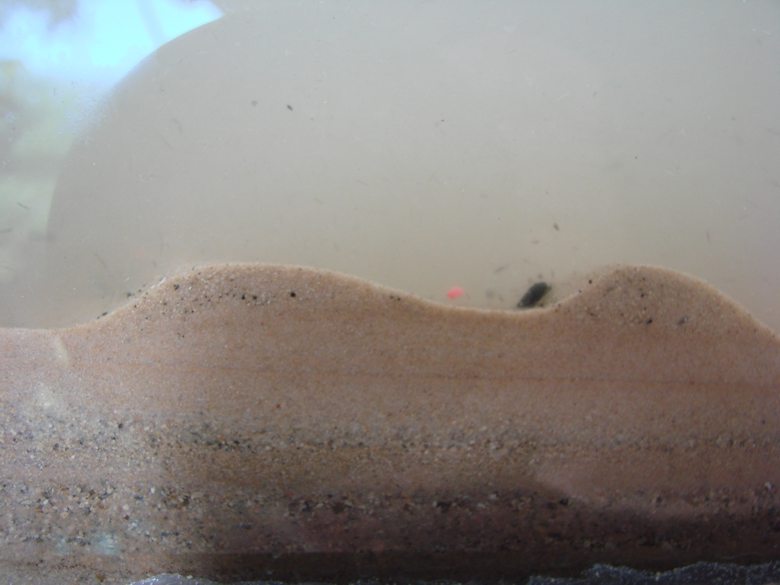
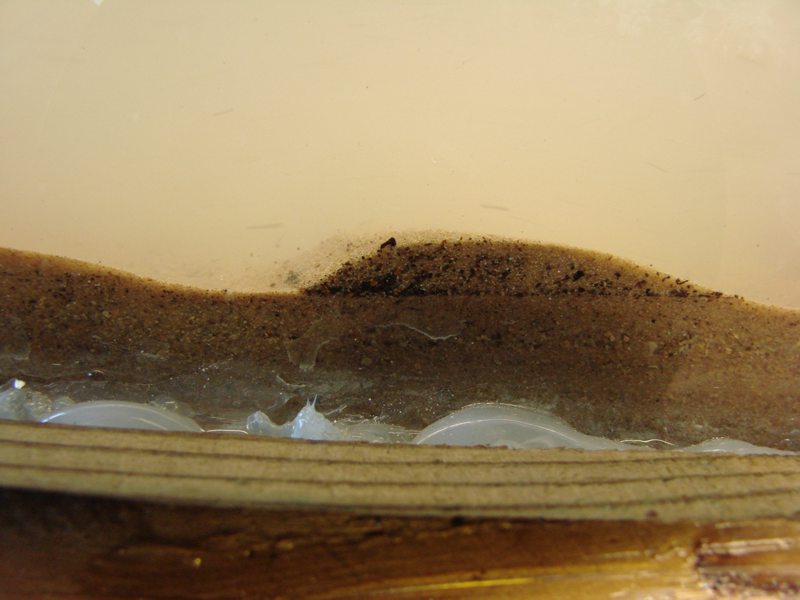

As you can see, crossbeds would form the wave ripples. As the
ripples progressed forward, they would encounter the slope of the next
ripple, and thus the crossbeds would build "uphill"; creating
translatent climbing beds. As is typical in crossbed formation,
the particle size influences the deposition order, and thus clear
climbing beds are easily formed and seen.
We had the flume tilted uphill, so we let the system continue to run,
to see what would happen when the crossbeds buried the ripples; would
they be destroyed, or buried and preserved? As you can see by the
above video, they were nicely preserved. HERE'S A NICE VIDEO OF THE RIPPLES
BEING BURIED BY CROSSBEDS ~ 2.5 meg WMV.










